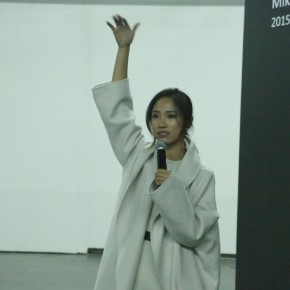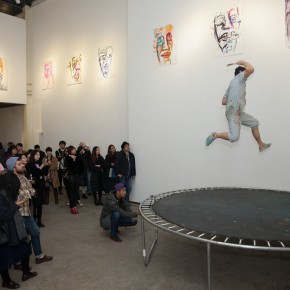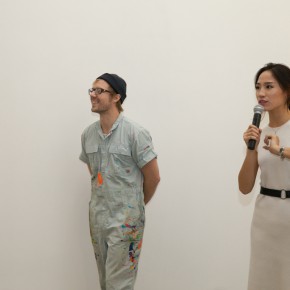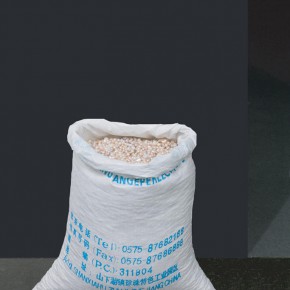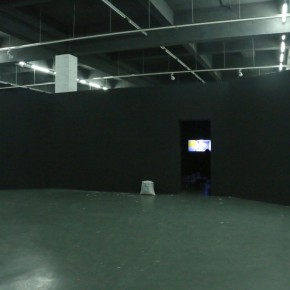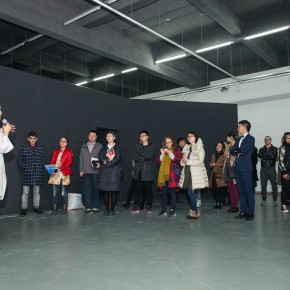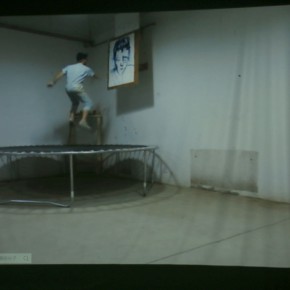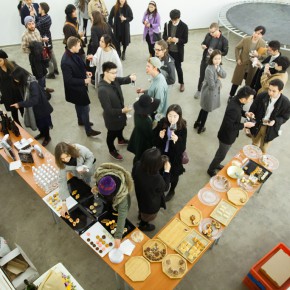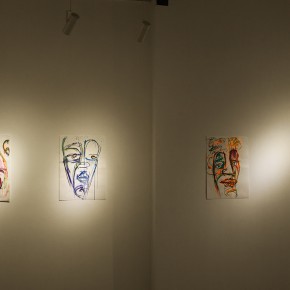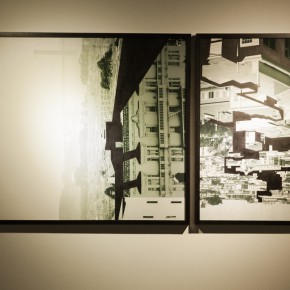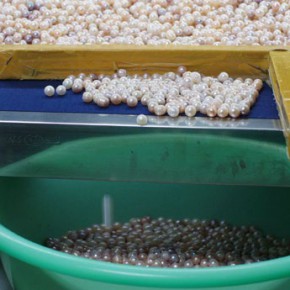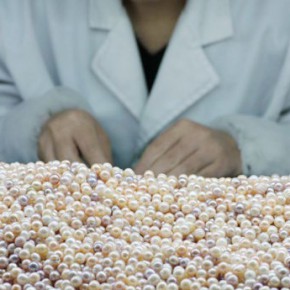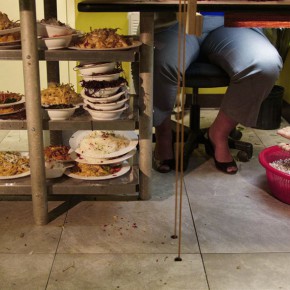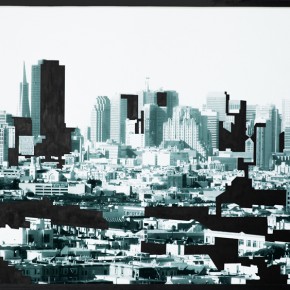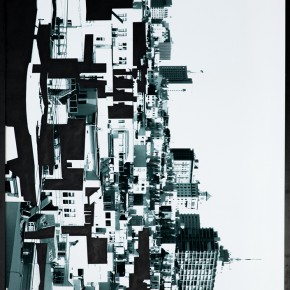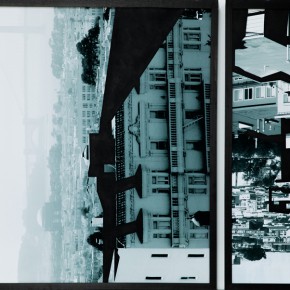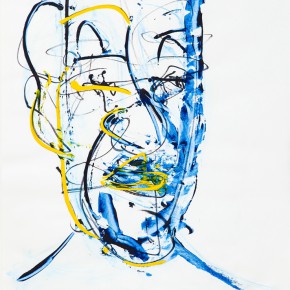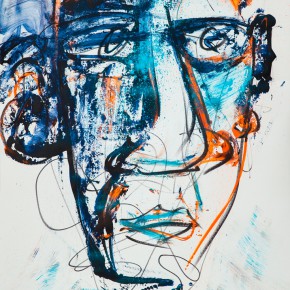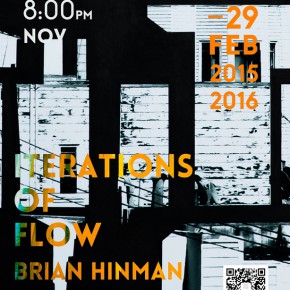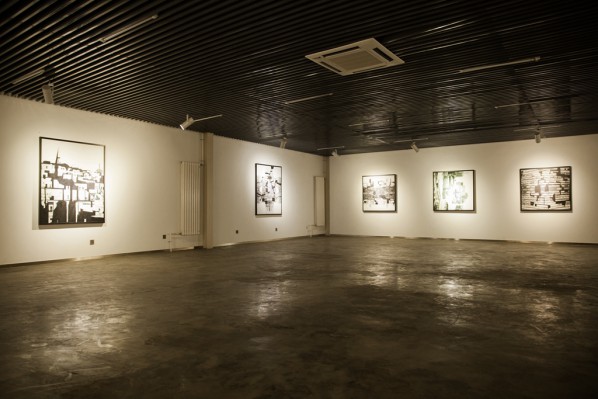
At 7:30 pm on November 14, 2015, the final exhibition of 2015 kicked off at Sishang Art Museum, composed of double solo exhibitions of Mika Rottenberg & Brian Hinman. Israeli artist Mika Rottenberg shows the film No Nose Knows created in 2015, as well as a bag of pearls related to the work; American artist Brian Hinman presents Left between the Dimensions series and Elevated Expression series, and Brian Hinman also had a live painting performance on the night of the opening.
Mika Rottenberg: Absurd Society
The Director of Sishang Art Museum Liu Linyao said that the half-an-hour video of No Nose Knows by the artist Mika Rottenberg took part in the 56th Venice Biennale in May. While the artist researched the pearl cultivation process in eastern China, she was inspired by seeing the amount of construction and largely empty high-rises and then created the work. Director Liu Linyao liked it very much and brought it back to China as a collection for Sishang Art Museum.
In the film component of No Nose Knows, the main character—a 6’5’’ blond Amazonian woman—Bunny Glamazon, is seen riding a mobility scooter through empty housing developments in what appears to be a dense, yet empty, concrete Chinese landscape. She enters one of the buildings, walking through a variety of rooms and hallways, some occupied by large bubbles emanating various sound frequencies and howls. Bunny then enters her ‘office’ and begins ‘working’—here consisting of the self-induction to an allergic reaction causing her ‘Pinocchio’ nose to inflate and grow; her supervision of the pearl making process, from the seeding of the mussels to the cracking of the shells, to the sorting of the finished pearls; watering the feet sticking out from the floor below her, while sneezing various noodle dishes such as Spaghetti al Pesto or Chou-Mein; and eventually popping the enigmatic bubbles at the day’s end. The connections between these actions and spaces form a sort of ‘pattern,’ and this pattern creates the conceptual shape of this work—a sort of ludicrous diagram of our shrinking world, where physical and geographic voids collapse while other gaps become greater than ever.
Mika Rottenberg writes in the preface by herself that, it interested me how this originally slow and rare natural process is now being mastered and accelerated—particularly in China where over 90% of the world’s cultured pearls are produced—and how this process simultaneously decreases the pearl’s value. The bizarre empty housing developments, I learned, existed in many parts of China and transform the landscape into what seems to me like ‘urban planning gone mad,’ which in my mind, echoed that stimulated pearl making process. They too seem like an irritant, and though (contrary to the pearl) not particularly beautiful, they seem to be a basic visual representation of how an economic bubble might look—human interference and acceleration of the natural processes of things like the creation of cultures and homes. These ‘six degrees of separation’ became the motivating movement of the piece; and this kind of serendipitous thinking and flux of association allowed other cinematic parallels to materialize, while keeping the anchor in documenting and deconstructing the idea of ‘work’—defined for this matter as the repetitive process of extracting, materializing, sorting, giving shape and value, unitizing and creating surplus out of either tangible natural resources or out of invisible energies.
Brian Hinman: Loop of Flow
Brian Hinman who participated in a residency program of Sishang Art Museum, features the Left between Dimensions series and Elevated series, as well as manuscripts of paintings and video of the creation, which were finished in 3 months when the artist stayed at the Sishang Art Museum. Director Liu Linyao said the exhibition started the residency program of the museum and it would hold a series of young artists’ exhibitions next year.
The Elevated Expression series looks like a performance, and he creates each painting in roughly 30 minutes of airborne jump time. The subjects he chooses are individuals he’s encountered at points throughout his life and who have significantly shaped his identity. However, instead of focusing on the human form, Hinman tries to emulate each person’s aura by playing with a variety of colors, textures, brushes and quantity of paint. The Elevated Expression series serves as a more active “game” that engages the right-hemisphere of Hinman’s brain. Ruled by kinesthetic movement, the right side of the brain processes sensorial information, rendering it a series of emotions that allows us to “feel” the present. By jumping on a trampoline, Hinman attempts to activate his “emotive processers,” detaching from the consciousness that is trying to organize and make logical sense of the stimuli.
In his Left Between Dimensions series, he deliberately defies these constructs. Block by block, building by building, Hinman moves through the space according to his own rules. Using a fine brush and black paint, he appropriates the urban forms with careful precision. Heavily influenced by the famed Spanish sculptor and painter, Eduardo Chiede, the conspicuous black forms disrupt, but perhaps also accentuate the preexisting space, as they highlight the spatial dialectic between empty and full. The bustling cityscape outlines the black void of a form, while the black form simultaneously pronounces the existence of the vapid city. The tedious process of producing these paintings allows him to enter into a meditative state of flow. Spending up to 50 hours on each canvas, he finds himself playing a concentration game to focus his energy on the present, subjectively exploring the space and constructing a new amorphous form.
The exhibition continues to February 29, 2016, if one visits the exhibition during this period, he has to make a reservation 24 hours in advance.
Text by Ye Yuanfeng, partly translated by Chen Peihua and edited by Sue/CAFA ART INFO
Photo by Sishang Art Museum, Ye Yuanfeng/CAFA ART INFO


